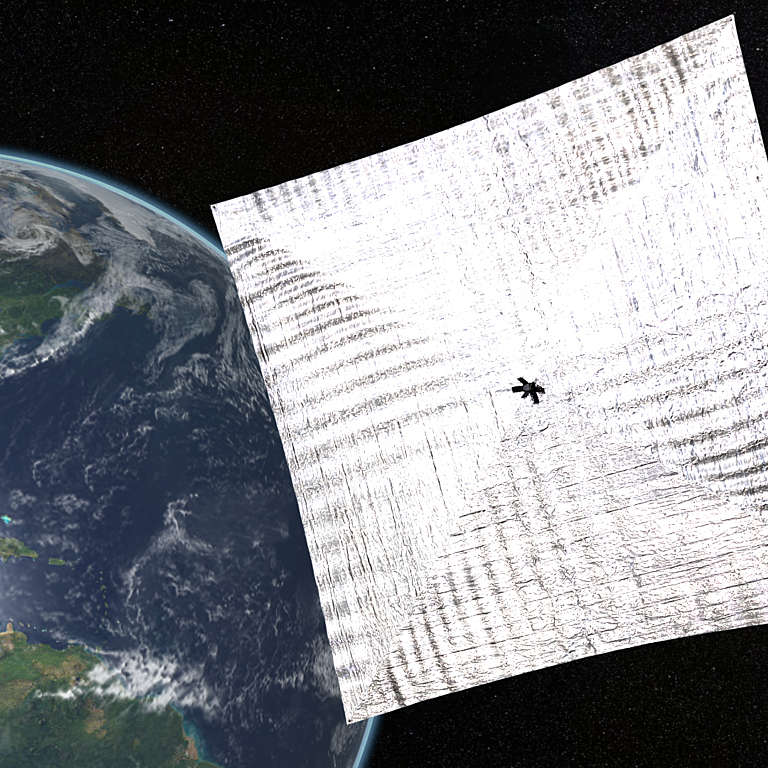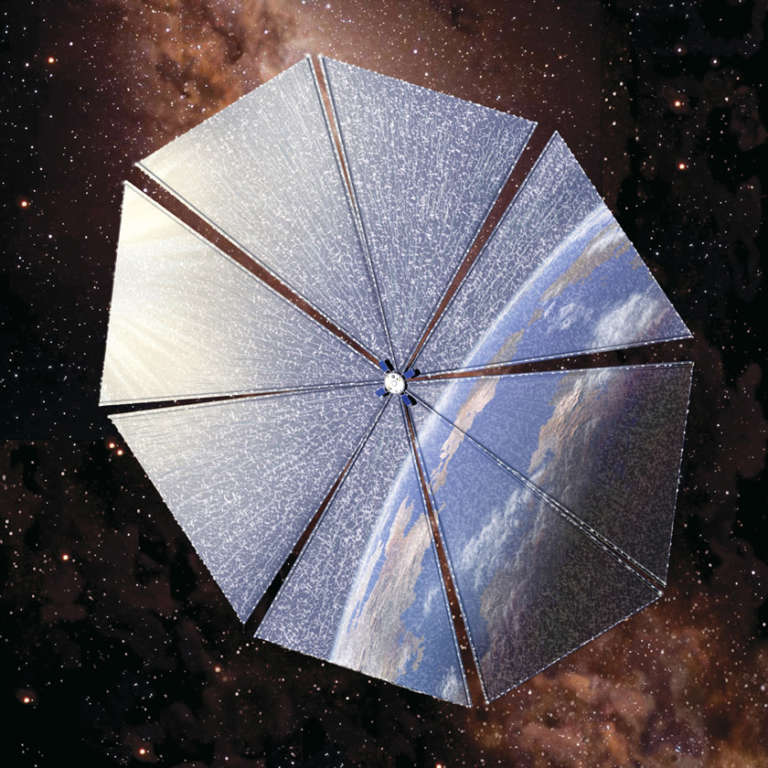All
All
Stories, updates, insights, and original analysis from The Planetary Society.
Cosmos 2
A letter from the Executive Director to the members and supporters of The Planetary Society.
No descent images or sounds from Phoenix
A couple of days ago Malin Space Science Systems (MSSS) issued a news notice that explains some of the horse-trading that went on behind the scenes to rescue MARDI, the descent imaging camera that they are building for the Mars Science Laboratory rover.
Planetary System Detected Around SETI@home Target Star
A fully formed planetary system, with five different planets of varying sizes and orbits has been found, orbiting a star more than 40 light years away. Significantly, it is the very same star, 55 Cancri, that was one of the chief targets of the SETI@home reobservations at Arecibo in March 2003.
Planetary Society's Optical SETI Telescope Offers Online View of Night sky
The Planetary Society's Optical SETI Telescope was built solely to search for possible light signals from alien civilizations. Located at Oak Ridge Observatory in Harvard, Massachusetts, it is the first dedicated Optical SETI telescope in the world. Its 72-inch primary mirror also makes it larger than any optical telescope in the U.S. east of the Mississippi river.
2007 Cosmos Award Honoree Paula Apsel
The 2007 Cosmos Award for Outstanding Public Presentation of Science was presented to Paula Apsel, the Senior Executive Producer of the Emmy Award-winning series NOVA and NOVA scienceNOW, and Director of the WGBH Science Unit at WGBH Boston.
Making Light Work
Professional Pilot Magazine asked me to contribute a prediction about the future of flight for the next century. Naturally, I wrote about solar sailing.
Millions of soundings yield clues to Mars' weather
Two months after the start of Mars Reconnaissance Orbiter's primary science phase, the Mars Climate Sounder instrument has already acquired more than four million soundings, building toward a vast data set on the three-dimensional structure of Mars' atmosphere over the full Martian year of the orbiter's nominal mission.
The 2007 Gene Shoemaker NEO Grant Recipients
In 2007, The Planetary Society awarded $34,500 as part of its Gene Shoemaker Near Earth Object (NEO) Grant Program. The grants were made to a group of international researchers to find, track, and characterize potentially hazardous NEOs.
Updates from Past Recipients of the Shoemaker NEO Grants (1 March 2007)
Thanks to The Planetary Society Shoemaker Grant, the 1.06-meter KLENOT telescope optics was completed at the Klet Observatory. Regular observations of the KLENOT project started in March 2002 under the new IAU/MPC code 246, so we can now present results covering 5 years of this work.
Keeping an Ear to the Center of the Galaxy, Southern SETI Prepares for Great Leap Forward
Located in the southern part of the continent of South America, Southern SETI has a continuous view of densest star-fields in our galaxy. And, since 1990, it has been sponsored and supported by The Planetary Society.
With Observations in Full Swing, Team Prepares to Remove "Sunglasses" from Telescope
Winter time is observing time at the Oak Ridge Observatory in Massachusetts, when humidity is low and the sky is often clear. And so it has been for the Optical SETI telescope, which opened its doors in April 2006.
Telescope Goes "Semi-Automatic"
Andrew Howard talks about the
Update: Monitoring the Weather?
The bigger the dream, the harder it is to achieve it. Our dream at The Planetary Society is to fly the first solar sail mission -- and prove the technology that might someday take humanity to the stars.
With Multi-Beam Receiver, SETI@home Takes Giant Step Forward
In seven intense days spent at the radio telescope Chief scientist Dan Werthimer and his colleagues completely overhauled the way SETI data is gathered at Arecibo, and ensured that SETI@home will henceforth enjoy the benefits of gathering data with the most advanced equipment anywhere in the world.
Updates from Past Recipients of the Shoemaker NEO Grants (18 July 2006)
Using the Shoemaker NEO Grant funds, Minor Planet Research has purchased a 1.7-terabyte data server for our Asteroid Discovery Station (ADS) education outreach program Through the generosity of Dr. Philip Christensen, this server is housed at the Mars Space Flight Facility (MSFF) at Arizona State University in Tempe, Arizona.
Telescope shows its Amazing Capabilities
During a few observation sessions in late April, the new Optical SETI Telescope was already demonstrating its amazing capabilities. Over three nights, the telescope completed 17 hours of observation, under the direction of Paul Horowitz and his team of Harvard graduate students. During that time, the telescope observed 1% of the sky, looking for the briefest flashes of light coming from outer space.
Searching for E.T. and the Cure for Cancer:The Planetary Society Helps Trigger a Computing Revolution
Planetary Society members truly have helped pioneer new techniques in the conduct of science. Our initial investment has returned amazing results that will continue to deliver benefits over years to come.
New items on the website: Rover update and Stardust@home
I just wanted to point out a couple of new items on the website.
The Planetary Society Optical SETI Telescope Opens
On April 11, 2006, a new era dawned in the search for extraterrestrial intelligence (SETI) with the dedication and beginning of operations of The Planetary Society Optical SETI Telescope in Harvard, Massachusetts. It is the first devoted optical SETI telescope in the world. The telescope was constructed by Paul Horowitz and his group at Harvard University using funding from Planetary Society members.


 Explore Worlds
Explore Worlds Find Life
Find Life Defend Earth
Defend Earth


 Sun
Sun Mercury
Mercury Venus
Venus Earth
Earth Mars
Mars Jupiter
Jupiter Saturn
Saturn Uranus
Uranus Neptune
Neptune Small Bodies
Small Bodies









